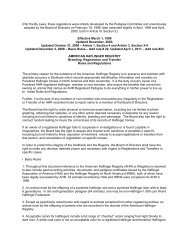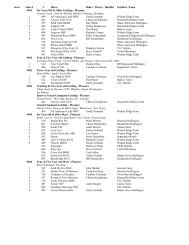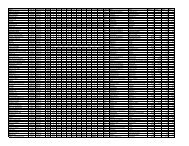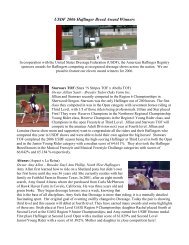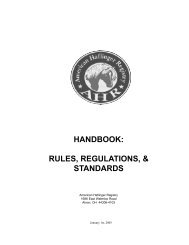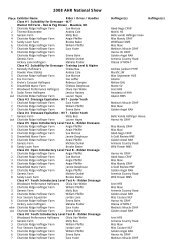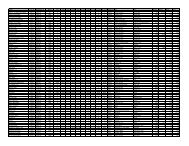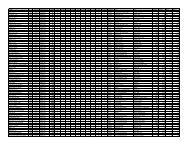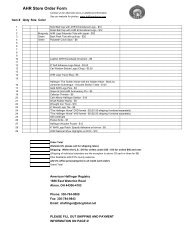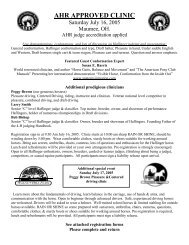handbook - American Haflinger Registry
handbook - American Haflinger Registry
handbook - American Haflinger Registry
You also want an ePaper? Increase the reach of your titles
YUMPU automatically turns print PDFs into web optimized ePapers that Google loves.
IX.REINSMANSHIP CLASSA pleasure driving class in which entries are judged primarily on the ability and skill of the driver.A. To be shown at a walk, slow trot, working trot and strong trot. Drivers shall be required to rein back. All drivers chosen fora work-off may be worked at any gait requested by the judge and may be asked to execute a figure eight and/or performother appropriate tests. In order to evaluate a driver’s versatility, the judge may request a test involving driving with onehand.B. The driver should be seated comfortably on the box so as to be relaxed and effective. Either the one or two hand method ofdriving is acceptable. Common to both methods, the elbows and arms should be close to the body with an allowing butsteady hand enabling a consistent ‘’feel’’ with the horse’s mouth. Drivers should not be penalized or rewarded for using onegeneral style over the other.C. To be judged:1. 75% on the handling of reins and whip, control, posture, and overall appearance of driver.2. 25% on the condition of harness and vehicle and neatness of attire.X. DESCRIPTION OF GAITSThe following descriptions constitute approved standard for performance of each of the required gaits in a pleasure drivingcompetition.A. WALK: A free, regular and unconstrained walk of moderate extension is required. The horse should walk energeticallybut calmly with evenly and determined pace.B. SLOW TROT: The horse should maintain forward impulsion while showing submission to the bit. The trot is slowerand more collected but not to the degree required in the dressage-collected trot. The horse should indicate willingnessto be driven on the bit while maintaining a steady cadence.C. WORKING TROT: This is the pace between the strong and slow trot and more rounded than the strong trot. Thehorse goes forward freely and straight; engaging the hind legs with good hock action; on a taut but light rein; theposition being balanced and unconstrained. The steps should be as even as possible. The hind feet touch the ground inthe print of the fore feet. The degree of energy and impulsion displayed at the working trot denotes clearly the degreeof suppleness and balance of the horse.D. STRONG TROT (“TROT-ON”): This is a clear, but not excessive, increase in pace and lengthening of stride whileremaining well balanced and showing appropriate lateral flexion on turns. Light contact to be maintained. Excessivespeed will be penalized. The term “Trot - On” should be used to call for the gait.E. HALT: The horse(s) and vehicle should come to a complete square stop without abruptness or veering. At the halt,horses should stand attentive, motionless and straight with the weight evenly distributed over all four legs and be readyto move off at the slightest indication from the driver.F. REIN BACK: Rein back is defined as a backward movement in which the legs are raised and set down simultaneouslyin diagonal pairs with the hind legs remaining well in line. To be performed in two parts:1. The horse must move backward at least four steps in an unhurried manner with head fixed and straight,pushing the carriage back evenly in a straight line. The driver must use quiet aids with light contact.2. Move forward willingly to the former position using the same quiet aids.7/08 VI-A-1066




